Do you have students who struggle with numbers? These dyscalculia interventions can help students with dyscalculia.
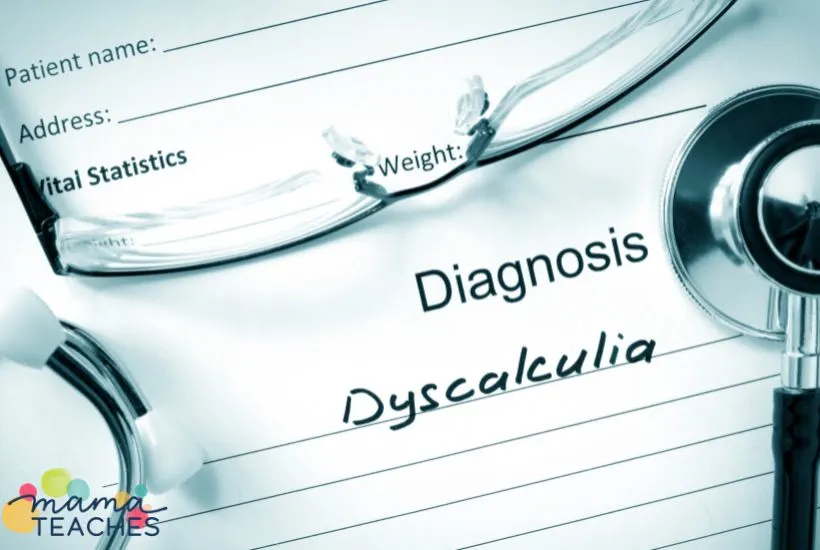
What Is Dyscalculia?
Dyscalculia is a brain-based learning difference that affects between 5-10% of the population.
Dyscalculia is sometimes referred to as “number dyslexia,” but it is not related to dyslexia (although a student may have both). It affects a person’s ability to understand and manipulate numbers with basic arithmetic. To learn more about dyscalculia, click here.
Although dyscalculia is a life-long brain difference, dyscalculia intervention, strategies, and coping skills can help someone with dyscalculia perform math.
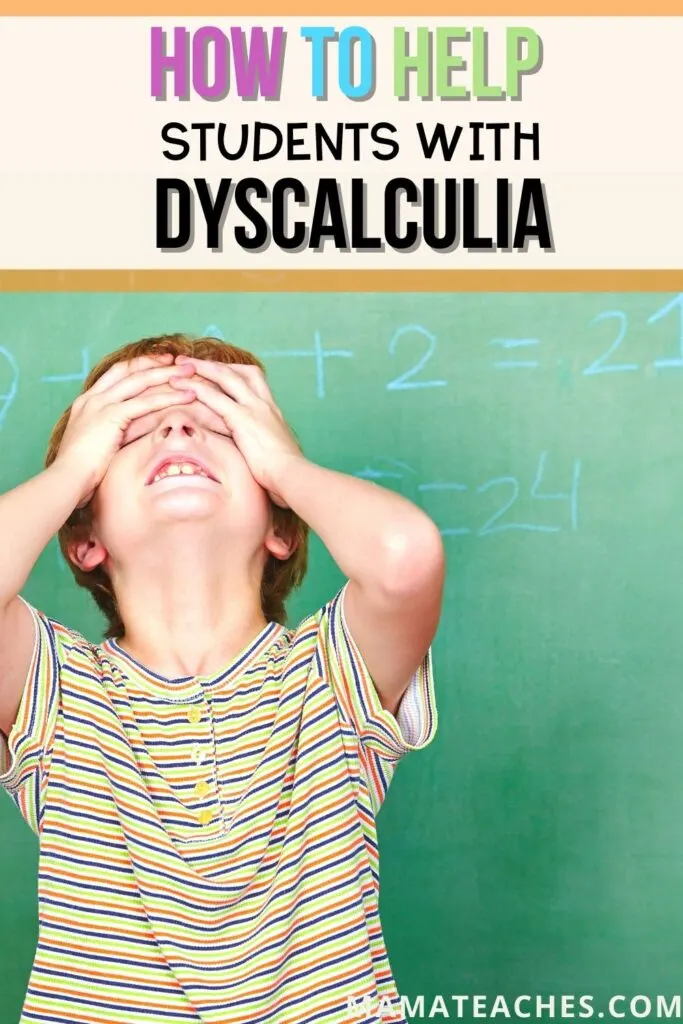
This article contains affiliate links to things that you might like.
How Teachers Can Help Students with Dyscalculia
If you suspect a student has dyscalculia, you will want to meet with the parents, the student, and your school support team to generate an IEP.
This is the best route for finding the best dyscalculia treatment since the learning difference affects people differently.
However, some students and families may not want to go that route because they do not want a formal diagnosis.
You can help students with dyscalculia (or just those who simply struggle with math) with a number of dyscalculia interventions, regardless of whether they have a formal diagnosis.
Work the Number Connection
Students with dyscalculia have trouble associating the number with the symbol and the quantity.
For them, they are separate things: the symbol 3, the counting number three, and the quantity of three items.
With young learners, spend extra time connecting the number to the symbol and the quantity. Use flashcards and a variety of manipulatives. Review frequently.
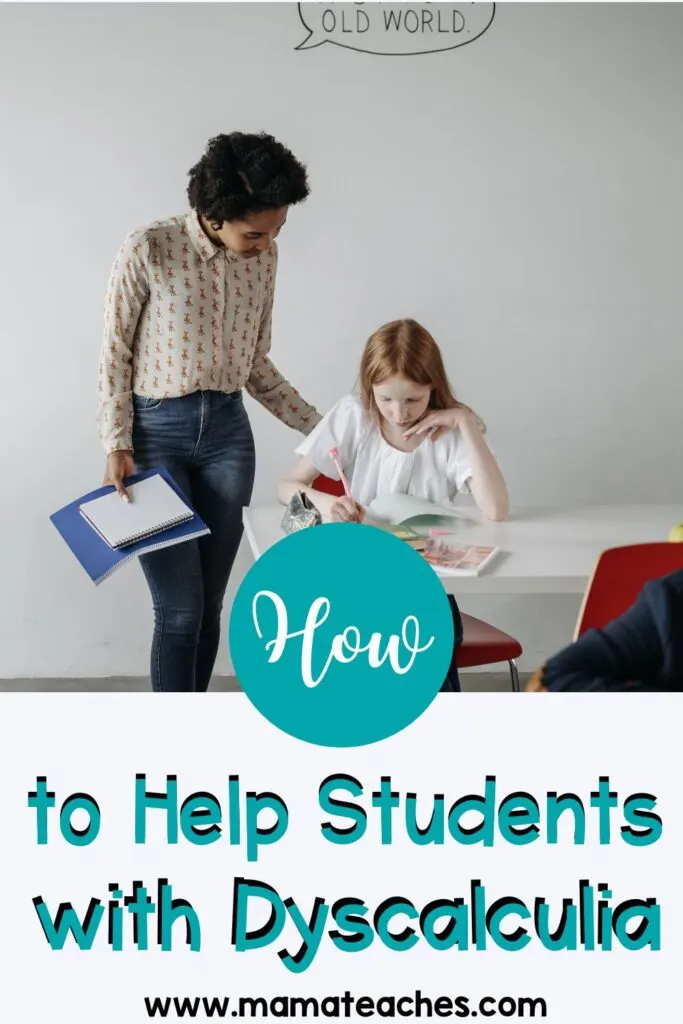
Spend Extra Time on Math Facts
Learning math facts is especially difficult for children with dyscalculia because mental math is such a challenge.
They can’t rely on mental logic tricks to arrive at the correct answer.
Find a way to make math facts stick without just drill, drill, drill.
You can teach skip counting to a song, use manipulatives, or use math stories to remember the math facts.
For more suggestions on how to teach math facts, check out this article.
Make It Visual
Visual aids help students with dyscalculia understand a math concept. Use them as often as you can.
For example, when you are teaching fractions, use “cookies” or “pizzas” made out of construction paper.
When teaching exponents, use graph paper to fill in the number of boxes (“5 squared means make a square that is 5 long and 5 wide”).
Use math manipulatives like linking cubes and number disks to teach concepts. Whenever you can, make math visual.

Make It Practical
Students with dyscalculia will benefit from making math practical and hands-on. Bring math into daily life as much as possible.
Relate math to money, shopping, recipes, building, etc. Don’t talk about real-life applications; do them!
Let your students enact real-life math examples in small groups. This kinesthetic and practical approach to math will help concepts stick.
Try a Blast from the Past Approach
Frequent review of past concepts can help students with dyscalculia (and all students, really).
Do a warm-up math mini-lesson of 5 minutes that covers a past concept. You can call it “Blast from the Past.”
This quick refresh will help students cement past learning and set the stage for future success.
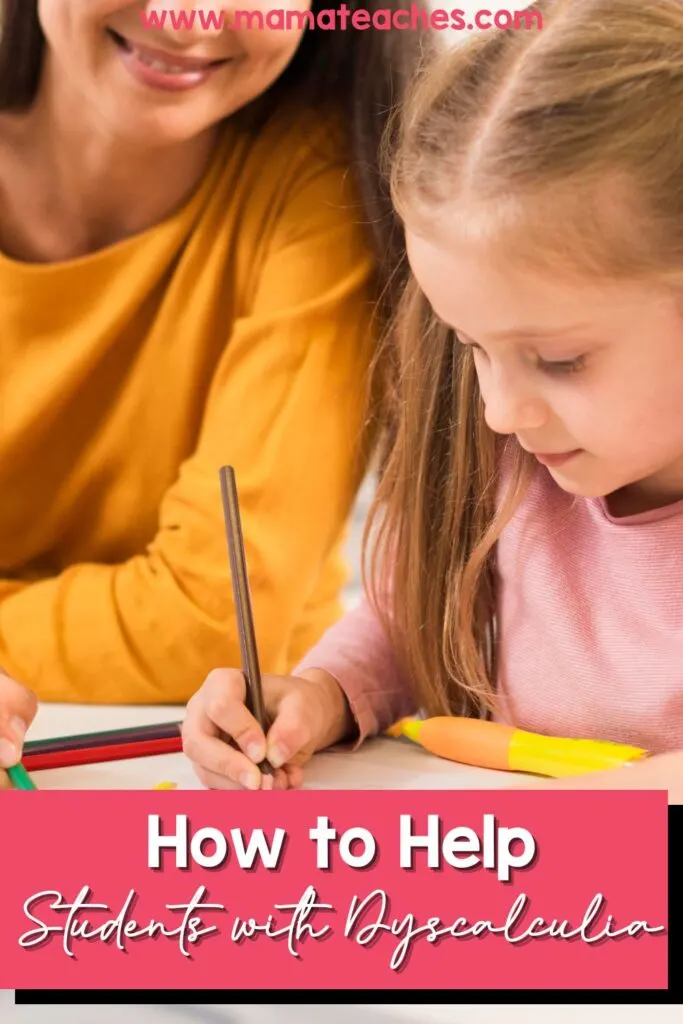
Break It Down
Math is a sequential skill subject. This means that skills compound. In order to do problems with percentages, the student must already know about decimals or fractions, place value, multiplication, and division.
When teaching a brand new concept, break it down into its separate skills as much as possible. You can use your Blast from the Past review to shore up a previous concept that applies to the current lesson.
Remember Differentiated Instruction
Students with dyscalculia may require differentiated instruction. You can introduce a concept in a simpler way to these students.
This may mean assigning fewer multi-step problems or eliminating or simplifying word problems (word problems are especially difficult for students with dyscalculia).
You can also provide an anchor chart as a resource.
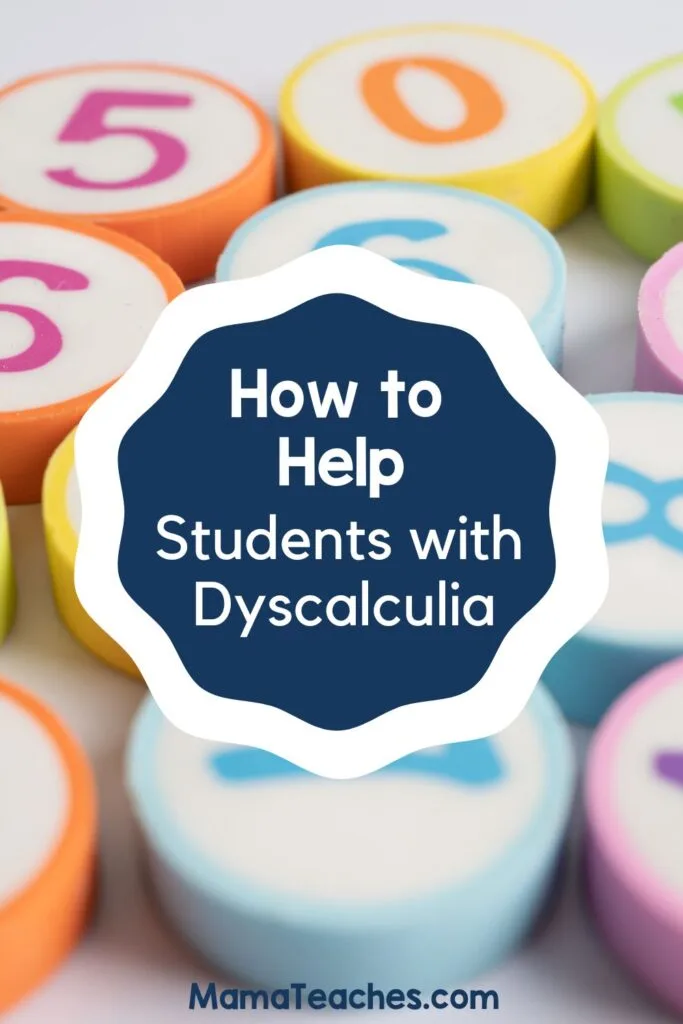
Remember Your Goals
Ask yourself, “What are the goals of this lesson or concept?” It may be that you can provide supports or accommodations with secondary skills for the student with dyscalculia.
For example, you may provide a reference sheet with geometry formulas and pictures. Or you may allow the use of a calculator for long division.
The student must write out the long division problem, but the calculator can provide support for the individual subtraction and small division problems inside the larger problem.
Always Check In
Frequent check-ins are necessary when you have a student with dyscalculia. You will want to look at their homework and see that they are learning the concepts.
You will also want to do a verbal check-in during or after class.
A great way to assess and cement understanding is to ask the student to teach the concept back to you one-on-one (“I Teach; You Teach”).
Not only does this expose any holes in understanding, but it also helps the student absorb the concept.
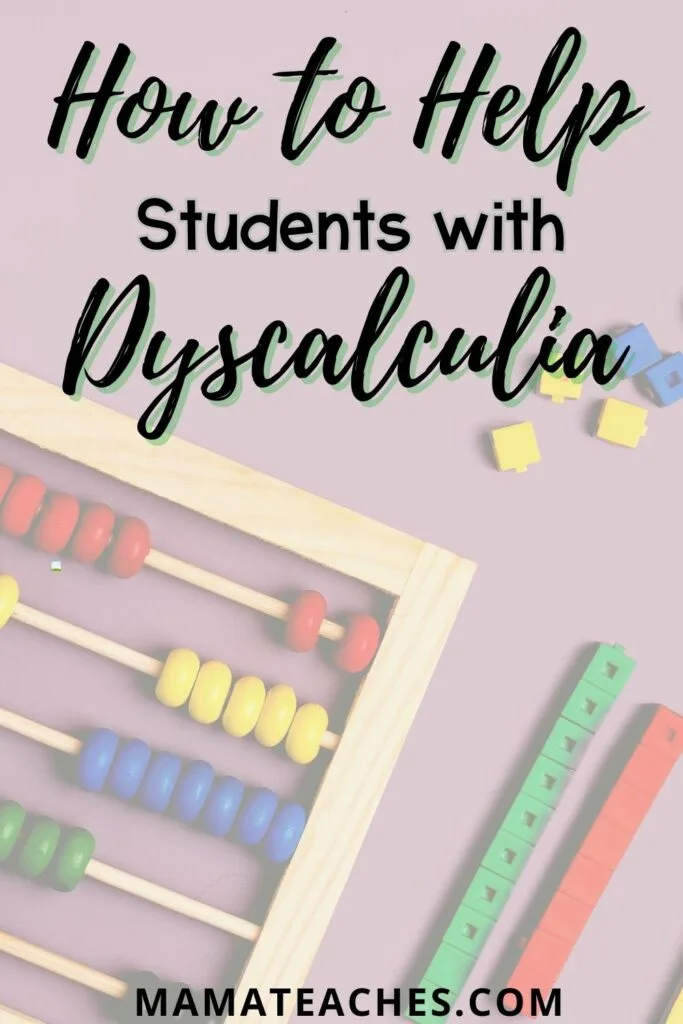
Dyscalculia Interventions
With these simple ideas for interventions and support, you can help your students with dyscalculia thrive in the classroom.
